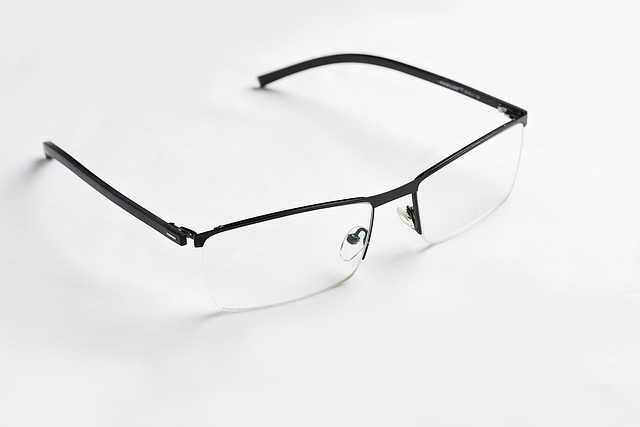Understanding Prescription Glasses: Types, Benefits, and Considerations
Prescription glasses are eyewear specifically designed to correct vision problems and improve visual acuity. These custom-made lenses are crafted based on an individual's unique optical prescription, addressing refractive errors such as myopia, hyperopia, astigmatism, and presbyopia. As essential medical devices, prescription glasses play a crucial role in enhancing the quality of life for millions of people worldwide who struggle with vision impairments.

-
Trifocals: Similar to bifocals but with three optical powers, addressing distance, intermediate, and near vision.
-
Progressive Lenses: These multifocal lenses offer a seamless transition between different optical powers without visible lines, providing correction for distance, intermediate, and near vision.
-
Computer Glasses: Specifically designed to reduce eye strain and improve focus when working with digital screens for extended periods.
How are prescription glasses made?
The process of creating prescription glasses involves several steps:
-
Eye Examination: An optometrist or ophthalmologist performs a comprehensive eye exam to determine the patient’s visual acuity and any refractive errors.
-
Prescription Writing: Based on the exam results, the eye care professional writes a detailed prescription specifying the required lens power and any additional features.
-
Frame Selection: The patient chooses a suitable frame that complements their face shape and personal style.
-
Lens Fabrication: Using advanced equipment, optical technicians cut and shape the lenses according to the prescription and chosen frame.
-
Lens Treatment: Optional coatings such as anti-reflective, scratch-resistant, or UV-protective layers are applied to the lenses.
-
Assembly and Quality Control: The finished lenses are fitted into the chosen frames, and the completed glasses undergo thorough quality checks.
What are the benefits of wearing prescription glasses?
Wearing properly fitted prescription glasses offers numerous advantages:
-
Improved Visual Acuity: Correcting refractive errors allows for clearer, sharper vision in various settings and distances.
-
Reduced Eye Strain: By eliminating the need for constant focusing efforts, prescription glasses can alleviate eye fatigue and headaches.
-
Enhanced Safety: Clearer vision contributes to improved spatial awareness and reduced risk of accidents, especially while driving or operating machinery.
-
Better Academic and Professional Performance: Improved vision can lead to increased productivity and better overall performance in school or work environments.
-
Aesthetic Appeal: Modern eyewear frames can serve as fashionable accessories, complementing one’s personal style.
How to choose the right frames for prescription glasses?
Selecting the perfect frames for prescription glasses involves considering several factors:
-
Face Shape: Choose frames that complement your face shape. For example, round faces often suit angular frames, while square faces may benefit from softer, rounded styles.
-
Lifestyle: Consider your daily activities and choose frames that align with your lifestyle. For instance, flexible and durable frames might be ideal for athletes.
-
Personal Style: Select frames that reflect your personality and fashion preferences, as glasses can be a significant part of your overall look.
-
Comfort: Ensure the frames fit comfortably on your nose bridge and behind your ears, with proper weight distribution.
-
Lens Thickness: If you have a strong prescription, opt for frames that can accommodate thicker lenses without appearing bulky.
What are some popular eyewear brands for prescription glasses?
Several reputable brands offer a wide range of prescription glasses to suit various needs and preferences:
| Brand | Style Focus | Notable Features |
|---|---|---|
| Oakley | Sports and active lifestyle | Durable materials, impact-resistant lenses |
| Ray-Ban | Classic and trendy designs | Iconic styles, high-quality materials |
| Warby Parker | Affordable fashion-forward options | Home try-on program, socially conscious brand |
| Zenni Optical | Budget-friendly variety | Wide selection, customizable options |
| Tom Ford | Luxury and designer frames | High-end materials, sophisticated designs |
Prices, rates, or cost estimates mentioned in this article are based on the latest available information but may change over time. Independent research is advised before making financial decisions.
How to care for and maintain prescription glasses?
Proper care and maintenance of prescription glasses can extend their lifespan and ensure optimal performance:
-
Clean Regularly: Use a microfiber cloth and lens cleaning solution to remove dirt and smudges gently.
-
Store Safely: Always store glasses in a protective case when not in use to prevent scratches and damage.
-
Handle with Care: Hold glasses by the bridge, not the arms, to maintain proper alignment.
-
Avoid Extreme Temperatures: Don’t leave glasses in hot cars or expose them to extreme cold, as this can affect the frame and lens coatings.
-
Regular Check-ups: Visit your eye care professional for periodic adjustments and to ensure your prescription remains accurate.
By understanding the various aspects of prescription glasses, from types and benefits to selection and care, individuals can make informed decisions about their eyewear needs. Whether choosing frames, exploring lens options, or maintaining their glasses, this knowledge empowers wearers to optimize their visual experience and overall eye health.






